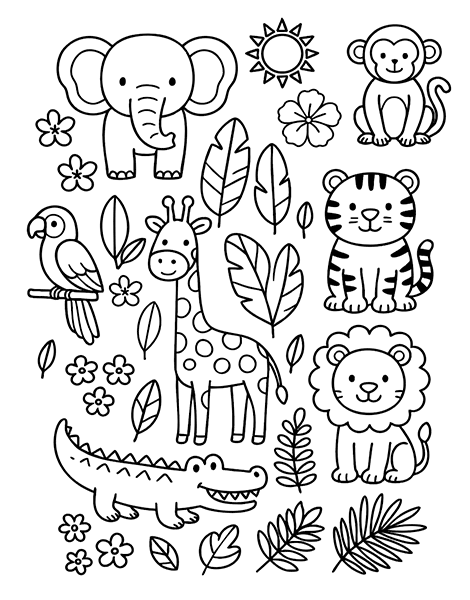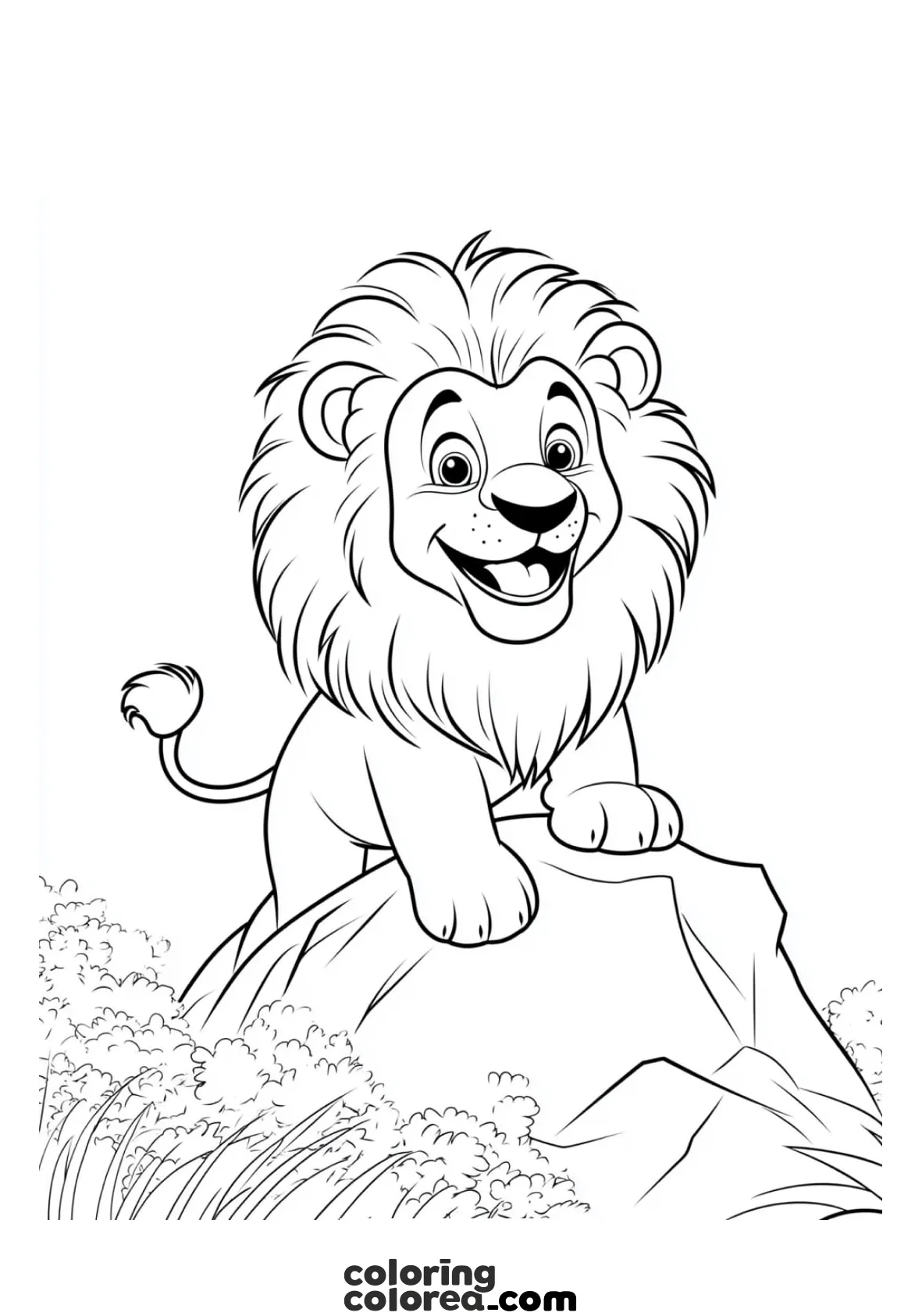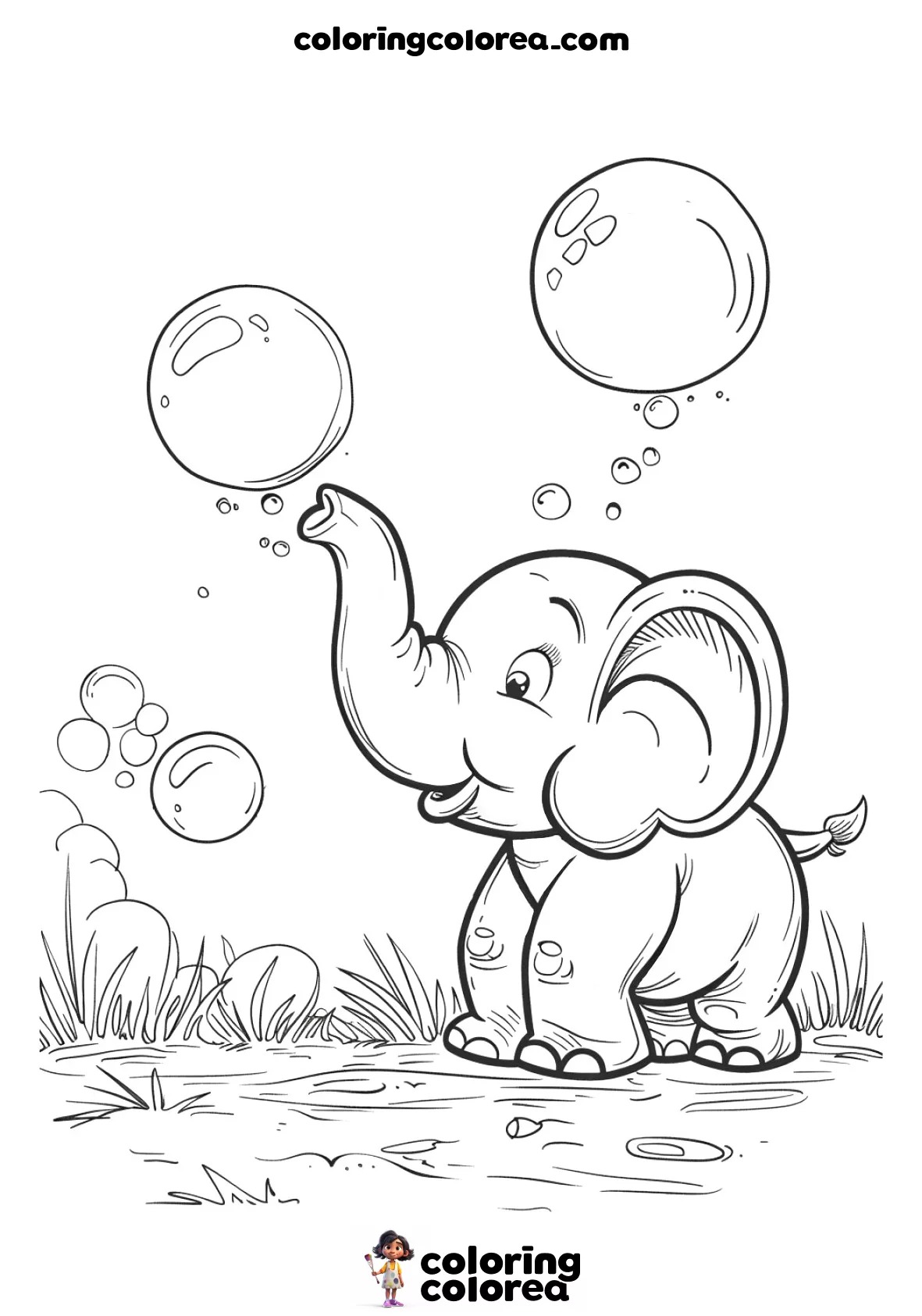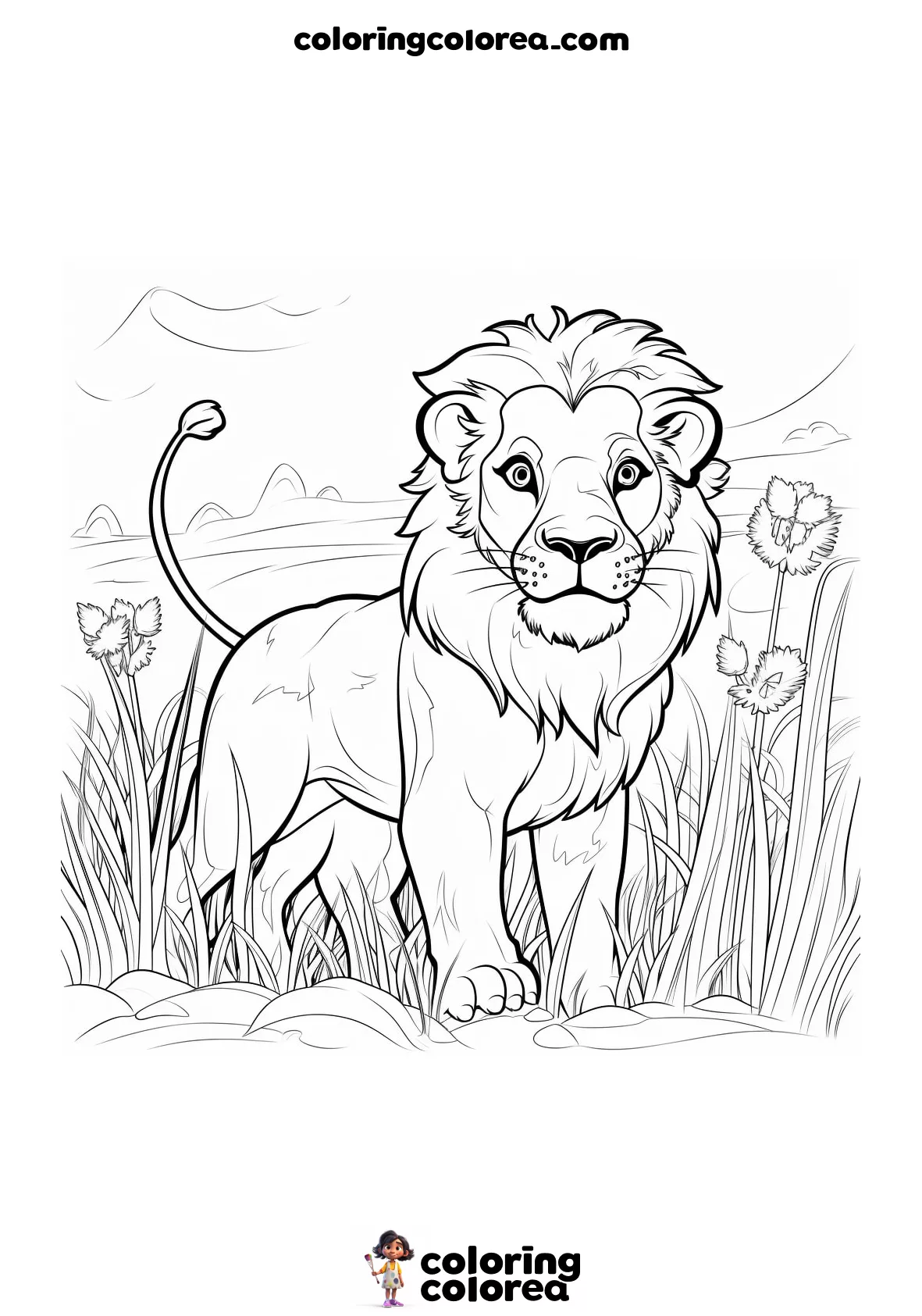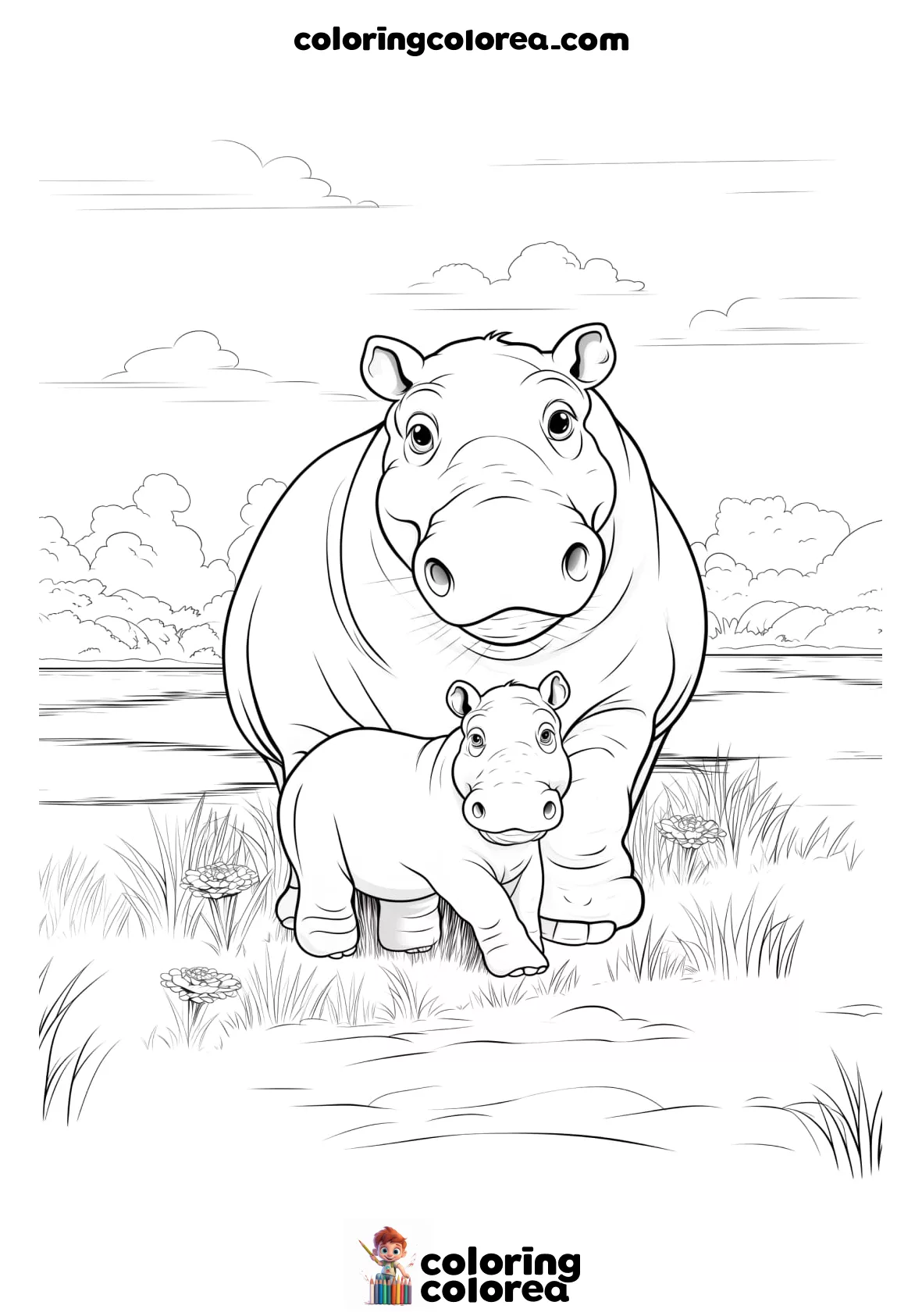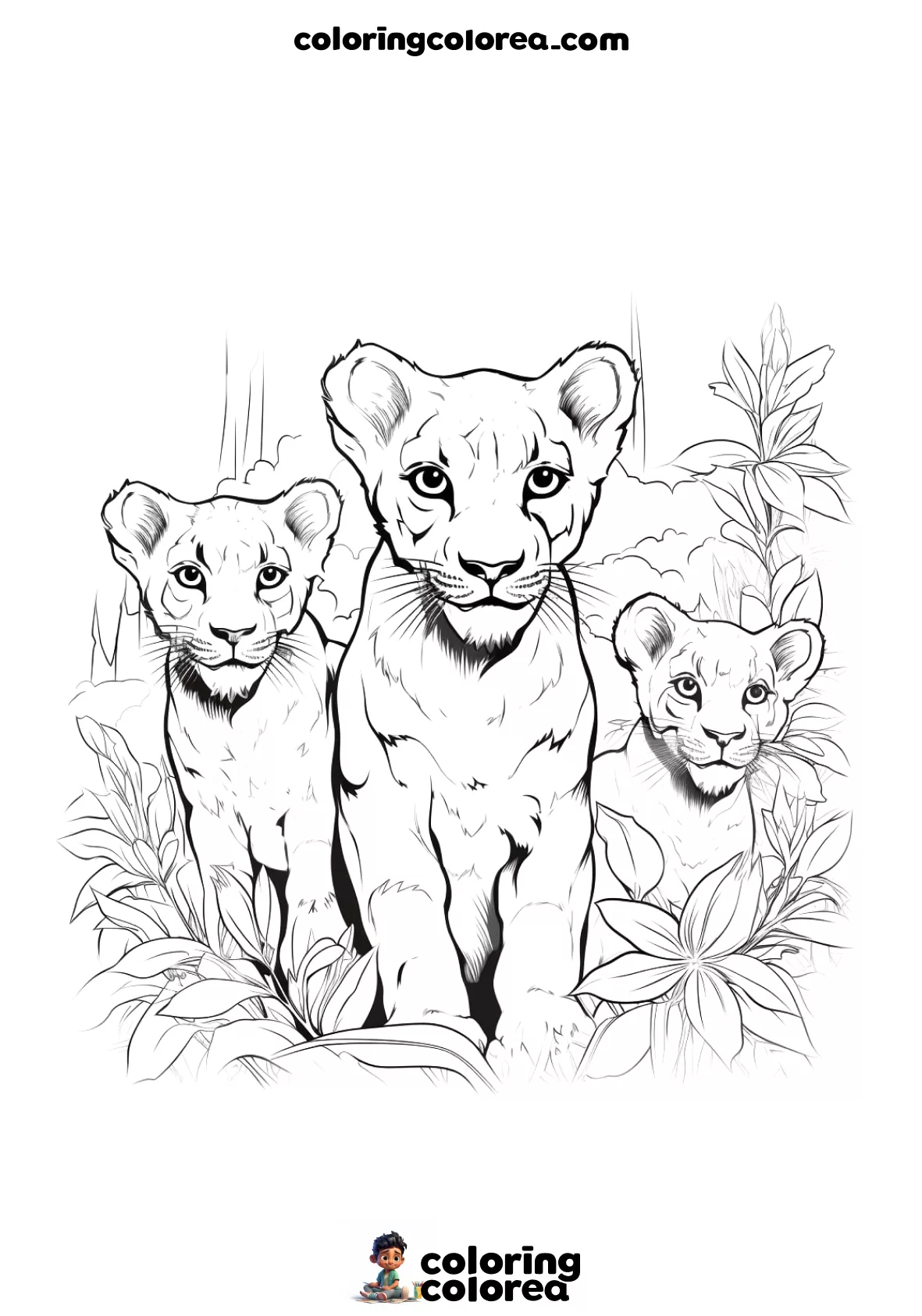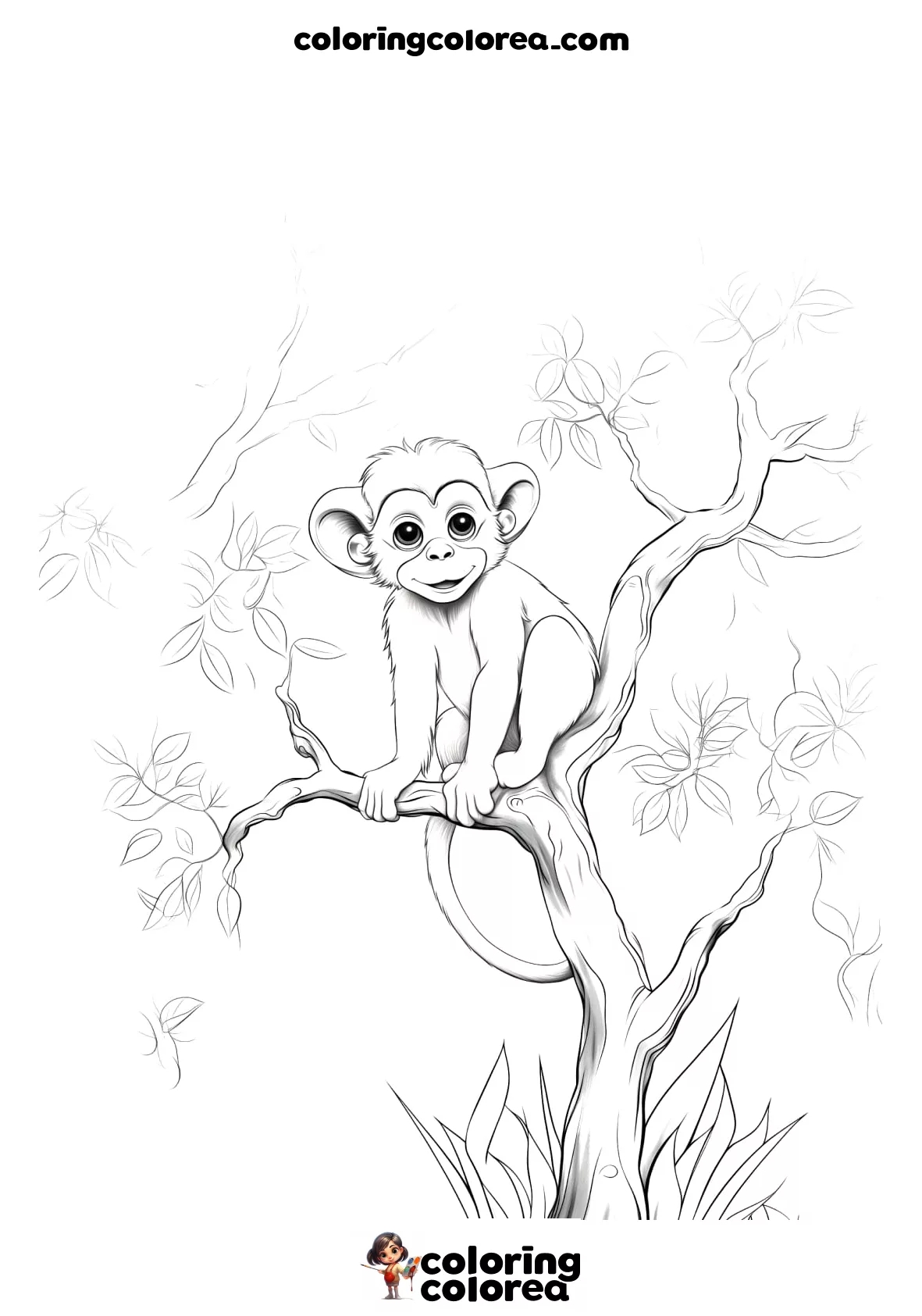Coloring the savannah is like going on a mini safari with your pencils. Each animal tells a story, and every background adds depth to the scene. It’s a way for children to connect emotionally and creatively with a faraway place full of life and movement.
The colors of the savannah are warm and earthy: sandy yellows, dusty greens, rich browns, and orange skies. These tones are perfect for exploring blending, layering, and shading techniques. But imagination is always welcome too. Why not color a zebra with rainbow stripes or give your giraffe some starry spots?
Main animals to color:
- The lion, strong and proud. A great way to try different mane styles and color transitions.
- The giraffe, elegant and unique. Perfect for practicing patterns and long shapes.
- The elephant, big and wise. Wrinkles and skin texture make it interesting to color slowly.
- The zebra, full of contrast. Ideal for working on symmetry and bold black-and-white design.
- The ostrich, fast and funny. Try different feather patterns and eye expressions.
Children can also color savannah landscapes: wide open spaces, single trees like acacias, rain clouds, or peaceful animal scenes. These images offer a chance to talk about topics like seasons, droughts, herds, or animal behavior in the wild.
Tips for coloring savannah pages:
- Start with earth tones, then add highlights in brighter colors.
- Use textures: wavy lines for fur, dots for rough skin, soft strokes for the sky.
- Create full scenes with animals, grass, and sky.
- Add extra details like animal footprints, nests, or flying birds.
To make the experience even more complete, you can ask children to tell a story about their scene, research a favorite animal, or learn about endangered species.
Coloring the savannah is more than just filling in pictures. It’s a beautiful, calming and enriching way to travel across the world — with just a few crayons.
